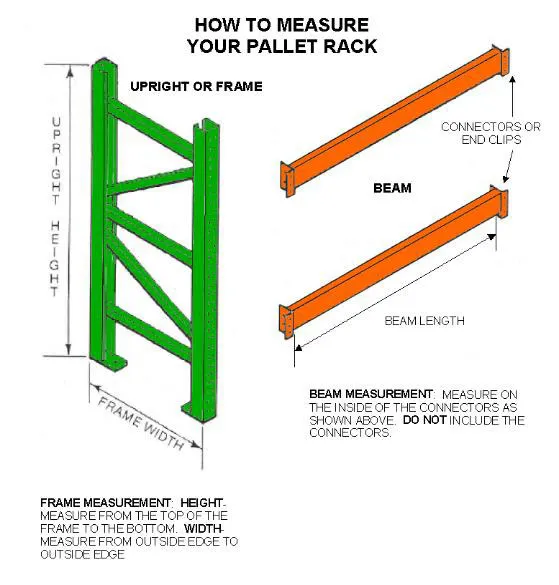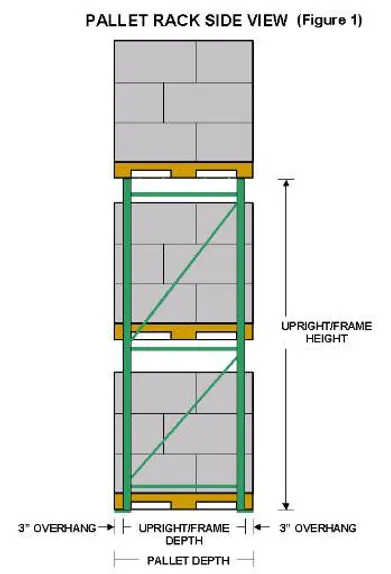Pallet Rack Resources
Basic components of pallet rack:
- 1) an upright (also called a frame), and
- 2) a beam. For a more detailed breakdown of rack components, please click here.

A Guide to sizing your rack order
This guide will help determine the upright frames and the beam lengths and capacities needed to meet your load requirements. Questions – don’t worry – just give us a call!
Rack Height: Rack Height is the height of following:
- Height of pallet loads (including the pallet)
- Height of beams
- 4” vertical clearance between top of load and bottom of beam frame/upright height
- If pallet loads are stored on the top of the rack, beam location should be at least 6” less than the fork truck’s lift height.
- Also keep in mind ceiling height and the ceiling clearance required by local codes (See Figure 1 and 2)
- Rack Depth: Rack depth is the depth of a single upright/frame. It depends on the design and size of pallet used.
- The front and back of the pallet should overhang approximately 3”. Example: a 48” deep pallet requires a 42” deep frame. (3” overhang for both front and back.)
- (See Figure 1)


Beam Length: the distance between a pair of uprights / frames in each rack bay.
- Required beam length is determined by adding the width of pallet loads, plus 4” clearance between pallet loads, plus 4” clearance between loads and each upright/frame.
- (See Figure 2)
Beam Capacity: Beam capacities are based on a pair of beams supporting an evenly distributed load.
- Determine the weight of each pallet load and multiply times the number of loads per shelf. Example: a pallet load weighs 2000lbs and there are two pallets per shelf. A beam capacity in excess of 4000lbs is required.
- (See Figure 2)
